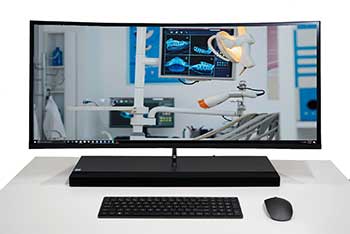AIO PCs


All-in-one computers are starting to rejoice from increased popularity lately, especially if we are to consider the recent success of the Windows 10 and Windows 10.1 platforms. These computers resemble their old desktop counterpart, but they have the advantage of providing touch-screen input and eliminating the bulky case used for hosting the processor, RAM, video card and so on. All components of AIO computers are to be found inside the monitor, users requiring nothing but possibly an extra keyboard and mouse to take utmost advantage of it. Nevertheless, these systems can be used with nothing else than one’s fingers.
An AIO PC can be left in sleep mode for years while still preserving the user’s data. Some systems feature SSDs which have been redesigned to act in the same way as the ones of recent ultrabooks for increased speed, but most AIO computers feature traditional hard drives which still warrant adequate storage space and speed. Since they utilize more influential processors such as recent dual-core and quad-core releases, tasks performed on such units will be faster in comparison to older personal computers. 3D Games will likewise be smoother, mainly due to the discrete video cards featured in some AIO PCs.
A substantial widescreen PC provides nothing else than an incredibly convenient conferencing framework. As opposed to having the family swarm around your 7-inch tablet or 6-inch smartphone, seat them before a 27-inch AIO desktop so they’re not subliminally crushing together to “fit on the screen”. Plus, a 27-inch screen is incredibly handsome for viewing a film from 10 feet away, so a couple of individuals can utilize it as an HDTV as a part of your nook furnished with a little couch or loveseat. If you put the holding nothing back one PC in a focal area, for example, your kitchen counter, you can screen your kids’ raids on the web, which is convenient on the off chance that you have a solid instance of risk.
All-in-One computers are the best option for classroom computer labs, public libraries, shared computer rooms, and places where it’s beneficial to keep the most important computer components out of reach.
